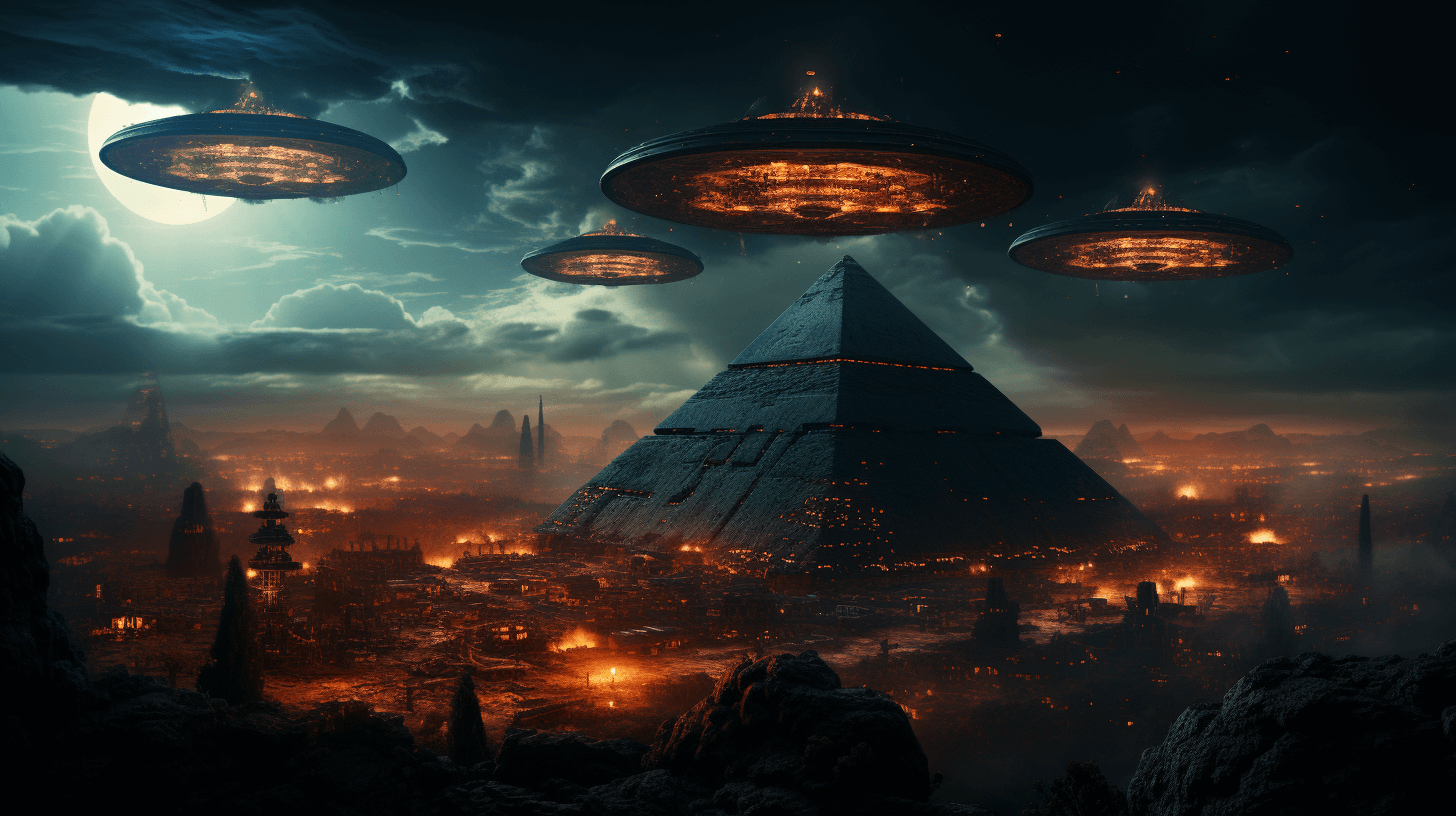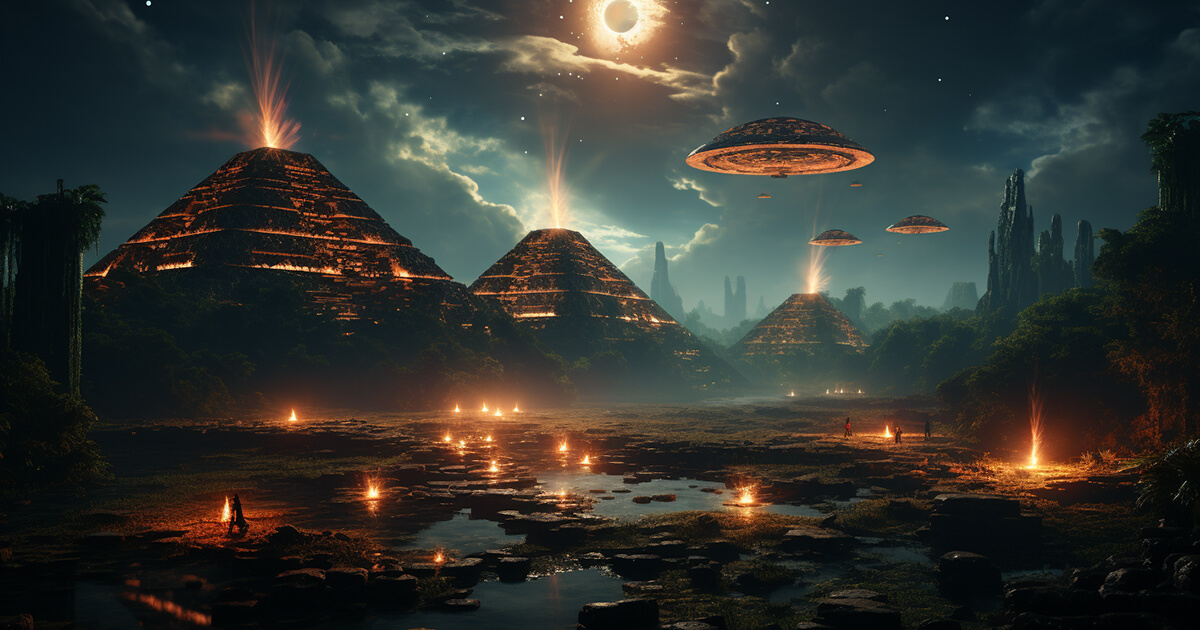
Ancient Aliens & The Mysterious Disappearance of The Mayan Civilization
The Great Mayan Disappearance & The Mystery of The Ancients
Introduction
The enigmatic disappearance of the ancient Mayan Civilization has captivated historians, archaeologists, and enthusiasts for decades. Nestled deep within the jungles of South America lies Tikal National Park, home to the ruins of one of the most remarkable cities of the classic Maya. From Palenque to Copan, Naranjo, and eventually Tikal itself, the sacred sites were abandoned, leaving behind a haunting mystery. In this article, we delve into the perplexing tale of the Great Mayan Disappearance, exploring theories that suggest a connection to celestial forces and even extraterrestrial involvement.
The Vanishing Act
Around 800 AD, the heart of the Maya civilization began to fall silent. Tikal, the grand metropolis that stood as a testament to their architectural prowess, was the last to be deserted. This puzzling exodus has intrigued researchers, as no signs of war or destruction mar the sites. The Mayans departed without a trace, leaving behind a vacuum of understanding. Scholars have estimated that up to 95% of the Maya population disappeared, sparking a relentless quest to uncover the truth.
Counting Down To Destiny
As the classic Maya thrived, their lives revolved around the intricate Long Count calendar. Comprising 5,125 years, or one great cycle, this calendar was divided into 13 baktuns, each spanning approximately 400 years. The end of each baktun was marked with jubilation, except for the 10th baktun, which curiously went uncelebrated. The Maya’s meticulous timekeeping skills raise the question: Did their calendar foretell their departure? Some ancient astronaut theorists propose that the Maya were counting down to a predetermined date of their disappearance.

Celestial Clues & Cosmic Connections
The allure of the heavens has long guided humanity’s curiosity, and the Maya were no exception. Archeoastronomers have uncovered a captivating revelation—Tikal’s grand plaza pyramids mirror the geometric patterns of the Pleiades constellation. This celestial alignment sparks speculation that the Mayans might have originated from the Pleiades, an idea shared by multiple ancient cultures. Modern-day accounts of alien abductions often mention the Pleiades as the source of the abductors. Could these claims be linked to the Mayans’ vanishing act?
A Mysterious Mayan Calendar Stumped Scientists For Decades: “A New Study Has Cosmic Answers”
Abduction or Ascension?
Ancient astronaut theorists suggest a thought-provoking notion: Could the Mayan civilization have experienced a mass abduction event? The intricate knowledge possessed by the elite priests and rulers may have been more than just a record of time. Linda Moulton Howe proposes that the Mayans’ departure wasn’t triggered by drought or disaster but rather by a deliberate experiment, akin to a harvest. The end of one calendar cycle may have marked the beginning of another, one that holds significance for extraterrestrial intelligences.
Conclusion
The mysteries surrounding the Great Mayan Disappearance continue to baffle and intrigue, prompting us to question the nature of their departure. Could the Long Count calendar have held the key to their destiny, ticking away toward a predetermined event? The celestial alignments and ancient astronaut theories further add to the enigma. While we may never have concrete answers, the legacy of the Maya endures as a testament to their remarkable achievements and the tantalizing possibility of a cosmic connection that transcends time and space. The ruins of Tikal stand as silent witnesses, whispering their secrets to those who dare to listen.
Disclaimer: The content of this article is based on speculative theories and interpretations. The views presented are not universally accepted among scholars and researchers.
* * *
NEXT UP!
This Ancient Maya City Was Hidden In The Jungle For More Than 1,000 Years
Researchers from Mexico’s National Institute of Anthropology and History (INAH) have discovered the remains of a centuries-old Maya city in the Balamkú ecological reserve on the Yucatán Peninsula.
In a statement, lead archaeologist Ivan Šprajc says the settlement probably served as an important regional centre during the Maya Classic period, which spanned 250 to 1000 C.E. The team named the newly discovered ruins Ocomtún—“stone column” in Yucatec Mayan—in honour of the many columns found at the site.
“The biggest surprise turned out to be the site located on a ‘peninsula’ of high ground, surrounded by extensive wetlands,” says Šprajc in the statement, per Google Translate. “Its monumental nucleus covers more than [123 acres] and has various large buildings, including several pyramidal structures [nearly 50 feet] high.”
* * *
READ MORE: This Could Be The Earliest Evidence of A 260-Day Maya Calendar Ever Found
Read more on The Maya Civilization: Were The Mayans Visited by Ancient Astronauts?
Telegram: Stay connected and get the latest updates by following us on Telegram!
We’d love to hear from you! If you have a comment about this article or if you have a tip for a future Collective Spark Story please let us know below in the comment section.
